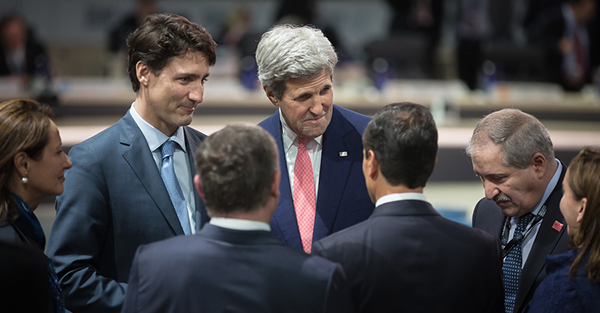
John Kerry makes ‘gut-wrenching’ tour of Hiroshima peace park … First US secretary of state to visit atomic bomb memorial says site is ‘harsh reminder of threat of nuclear weapons.’ – CNN
Over the years, as we have helped debunk elite propaganda, from elaborate NASA hoaxes to vaccine cover-ups, it has occurred to us more and more strongly that something is wrong with at least parts of the “nuclear narrative.”
Take the latest developments. Kerry goes to Hiroshima (see excerpt above) to commemorate the war dead while the US focuses on a nuclear arsenal upgrade that will generate smaller and more efficient bombs at gargantuan expense.
Kerry won’t apologize for dropping the Bomb; and those running the nuclear arsenal upgrade surely won’t apologize for its complexity or cost.
The budget is apparently estimated to be $1 trillion and the program will run for three decades. But who is supervising? And who is providing the accountability?
The Alliance for Nuclear Accountability has published “Trillion Dollar Trainwreck,” pleading for some sanity. Democracy Now just interviewed with the group’s leader Marylia Kelley.
Kelley makes some good points. The US military-industrial complex surely deserves scrutiny beyond what it is usually subject to. Do US congressmen just take the Pentagon’s word for it? It sometimes seems that way.
The threat of nuclear weapons is deeply embedded in our psyches. We make all sorts of personal and family decisions based on what we understand about them and about nuclear power in general.
Do we really have the facts? Once upon a time, we were confident about the pharmaceutical industry and its vaccine offerings. Today we are not.
One of the most prominent issues regarding the nuclear program is its secrecy. That secrecy goes all the way back to the beginning of the program in the 1940s.
In the US, we’ve read, revealing atomic information of any sort is punishable by death. If you are looking at this article, you’re in danger.
In Japan it was even illegal to question the official story about Nagasaki and Hiroshima. This was punishable by imprisonment and execution.
The secrecy has blurred the narrative for nearly 75 years. It even makes what happened at Hiroshima and Nagasaki difficult to determine.
Questions have been raised on numerous fronts regarding the twin bomb blasts – about shadows supposedly etched into streets and walls, for instance. Photographs seem to have been aggressively retouched to emphasize damage. US personnel reportedly stated they were asked to exaggerate the number of dead and wounded.
Even the story of the main witnesses to the blast, a group of Jesuits, has come under scrutiny. Somehow the group emerged, unscathed and un-irradiated after the bomb blast only a few blocks away. They later attributed their good fortune to the protection of the Virgin Mary.
The main alternative theory regarding Hiroshima and Nagasaki is that they were firebombed. How this would have taken place without being noted – or noticed – is difficult to imagine. Yet, the damage to both small cities does seem to resemble firebombing. Wood buildings burned but stone and concrete ones did not. In Hiroshima both the hospital and the train station survived.
Is it necessary to fully resolve what actually happened so long ago? Perhaps out of decency, if nothing else, one ought not pursue it. But the questions that linger about Hiroshima and Nagasaki are representative of the larger issues surrounding “weapons of mass destruction” generally.
Are we really being told the truth? Can we fully trust the Pentagon or even Congress when it comes to these issues? For instance, how many weapons are there in the world – and how many actually work? Is there any way of knowing? North Korea has recently been in the news for claims that it has created various kinds of sophisticated nuclear weapons. North Korea can’t even feed its population. Who really knows if its claims are true?
Can we look to history for an answer? Unfortunately, many of the photos and films of US nuclear tests (in particular) that are now available on YouTube and elsewhere appear to have been faked. Is it possible the fabrications or exaggerations persist today?
True, the biggest US corporations provide the product and the Pentagon vouches for the quality. But this is the same Pentagon that can’t be audited because its accounting is dysfunctional. The same Pentagon that once announced it could not account for trillions in spending (right before 9/11).
Can US fedgov be trusted these days? Once it seemed so much better. In fact, we’ve commented in the past on the shrinkage of US federal government competence. The erosion of its apparent, aggregate brilliance.
After all, this is a government that participated in two of the most formidable breakthroughs in human history in three decades.
First the US federal government uncovered the secrets of the atom bomb, and nuclear power. Then, only three decades later, the US federal government sent astronauts all the way to the moon, not just once but many times. And nearly flawlessly.
Today, this same government cannot launch a health care website on time.
In some five decades, the US fedgov has gone from the single most brilliant entity that history has ever known to a dysfunctional failure.
This is truly a remarkable decline.
Years ago we predicted that the Internet would end in a “reformation” that would shake society in fundamental ways. Little did we understand the full import of what a Modern Reformation would entail.
Conclusion: Almost all we were taught in the 20th century seems in retrospect to include questionable or false elements. Thank goodness at the same time we became aware of Austrian economics and the subversive magnificence of “human action.” These days we take nothing for-granted. When it comes to government, one needs to “trust but verify.” This ought to apply to nuclear weapons and their programs as well.
